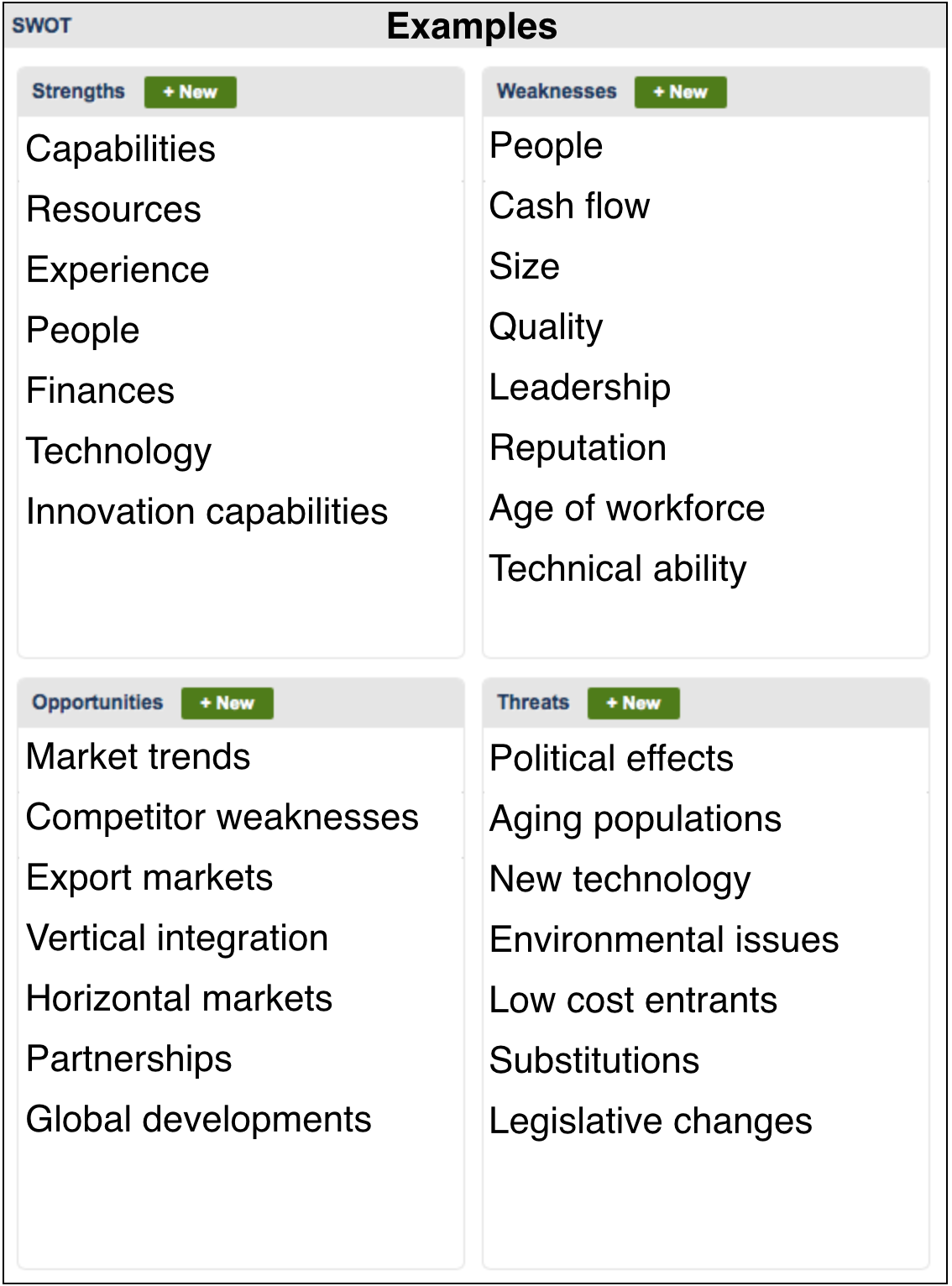A common tool used in planning sessions is the SWOT analysis. The acronym SWOT stands for Strengths, Weaknesses, Opportunities and Threats. The tool was developed by Albert Humphrey of the Stanford Research Institute in the 1960’s. Although we typically use this tool for strategic planning purposes, it can also be used to evaluate a person, product, market, industry or business opportunity. Typically during quarterly planning, we focus on the external market by looking at opportunities and threats to ensure we are looking outside the organization as we plan and develop priorities. During annual planning, it is more common to conduct a full SWOT analysis by also looking at the strengths and weaknesses internally to aid in our organizational development and strategic thinking. If your business is heavily impacted by the pandemic, you might prefer to read COVID 19 SWOT Analysis: SWOT Analysis in a Pandemic
The “Wikipedia” definition for the SWOT is: A structured annual planning method used to evaluate the Strengths, Weaknesses, Opportunities, and Threats involved in a project or in a business venture:
Power SWOT analysis groups key pieces of information into two main categories:
• Internal factors – the strengths and weaknesses internal to the organization:
Strengths: characteristics of the business or project that give it an advantage over others.
Weaknesses: characteristics that place the team at a disadvantage relative to others.
• External factors – the opportunities and threats presented by the environment external to the organization:
Opportunities: elements that the project could exploit to its advantage.
Threats: elements in the environment that could cause trouble for the business or project.
I have conducted SWOT analysis using two different methods. The first is to use individual think time. Allow each individual in the planning session 5 minutes to think about the first category, i.e., strengths. Ask each person to write down what is seen as the organization's top strengths. After the five minutes is up, move from person to person and ask them what their top 2 or 3 items listed are and transcribe these onto a flip chart or white board. Do this for each category.
The second way I have conducted the SWOT is to have an active brainstorming session where each member simply talks aloud and the facilitator records the information visibly. This can spark some new thoughts as people build off each other’s thoughts. It can also foster groupthink, which can be good for team building.
Both methods are effective. Once the lists are compiled, the key is to distill the critical information from each category and to use it to evaluate the idea under discussion or to make decisions as the planning session continues. We recommend that you have the team discuss, debate, and agree on the top 3 Strengths, Weaknesses, Opportunities and Threats facing your organization at this moment in time.

The exercise is quick to conduct, depending on the group size, and produces a lot of good information to use for decision-making or priority development.
The SWOT analysis can be a very effective tool to capture the thinking of the group on both internal and external issues and ideas to effectively evaluate an opportunity or to aid in the planning process. Give it a try the next time you need to evaluate an idea or conduct a planning session.
Good luck, Alan
Additional Rhythm Systems Meeting Resources:
How To Have Effective Weekly Staff Meetings (With Sample Agenda Template)
Download Our Weekly Meeting Agenda
Are You Having Weekly Meetings with Yourself?
Management Meeting Agenda: Make Your Management Meetings More Effective
Weekly Adjustment Meetings vs. Weekly Status Meetings (Infographic)
Consider using Rhythm Software to run your weekly meeting, where the status and agenda are automatically created every week to keep you on track!




